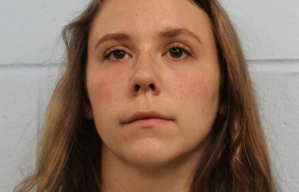
(Photo : Spencer Platt/Getty Images)
COVID-19 autopsies indicate that SARS-CoV-2 spreads even after the death of the host, lasting for months.
COVID-19 autopsies disclose that SARS-CoV-2 spreads even after the death of the host, as it persists in the body affecting tissues.
SARS-CoV-2 Spreads Even After Host's Death
The virus is a respiratory infection, but more proof that the coronavirus still spreads to other organs, reported Science Alert.
Evidence shows proof that the virus infects the lungs, heart, spleen, and most organs, even the eyes, and brain. One examination showed the virus inside the brain of a patient deceased for 230 days. Based on the study's authors from the National Institutes of Health (NIH), SARS-CoV-2 can cause chronic infection in some patients and persist in the body for days or weeks, noted Nature.
Before this, the examinations of dead patients had signs spreading out many organs, as viral remnants are seen in tissues, organs, and bodily fluids. During July 2020, more examinations showed blood clots in all vital organs from those who died from the virus.
Research by the NIH verifies the data and shows the results as valid in more detail than ever. Most recent research shows that the virus stays longer in dead bodies than longer.
The research examined 44 autopsies, wherein researchers carefully identified and measured the threshold of RNA Molecules from SARS-CoV-2 in 85 places and liquids. This genetic code reflects how the pathogen could have been repeating in a human's body.
In most of the tests performed between April 2020 and March 2021, it was found that older, unimmunized individuals who died from COVID-19 depicted innumerable signs of SARS-CoV-2 multiplication in a total of 79 various body fluids.
Several of the variations were noteworthy two weeks after the diagnoses showed up. Remarkably, while the lungs have shown the most swelling and damage, the brain and other organs have rarely exhibited substantial pathological changes despite a significant viral burden.
The researchers are uncertain how this is the case. It's feasible that the human immune system could be more useful at attacking all those other places when it comes to trying to target the respiratory system.
COVID-19 Autopsies Reveal More About Pathogen
Scientists determined evidence that perhaps the lungs were much less susceptible to infection than when they were at the beginning of COVID-19 regeneration, whereas other areas did not exhibit nearly as much gain. According to the findings, while SARS-CoV-2 has the highest burden in lung sacs, the pathogen has the potential to spread throughout the body.
A further unanswered question is why the disease spreads so far and is so expansive. The current study's necropsies did not frequently reveal infectious agent remnants in the bloodstream, suggesting that the virus continues to spread via other methods. It hints at how the pathogen stays in the system and why some suffer from long-haul COVID.
The study done by the NIH had not studied long COVID sufferers, but it helped devise ways for new treatment. Taking Paxlovid, an antiviral, might boost the immune system in fighting the pathogen in tissues, organs, and fluids it had to get to. It could help lessen the symptoms suffered.
One of the authors, Stephen Hewitt, from the National Cancer Institute, hopes the viral lingering and its link to long COVID. These COVID-19 autopsies reveal that SARS-CoV-2 spreads in the body even after the death of the host.
Related Article: New Research Reveals Mechanisms That Make Coronavirus Variants, Mutations Highly Transmissible








